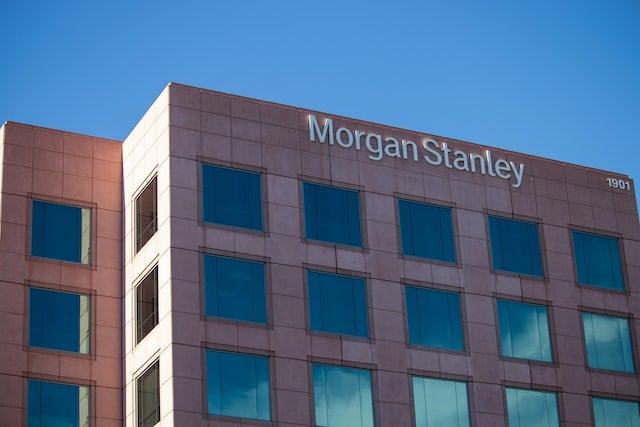trillion this year. But are many advisers, relatively recent
recruits into the industry, really up to the job if a downturn
comes amid the subprime crisis and clients decide to head for the
exits?
Global high net worth assets will surpass $100 trillion this year
and will go on to soar to nearly $129 trillion by 2011, according
to new projections by the Boston Consulting Group (BCG). In its
widely followed annual wealth survey, the consultancy estimates
that global wealth rose to $97.9 trillion in 2006, growing by 7.5
percent measured in local currencies. This increase marked the
fifth consecutive year of expanding wealth among the HNW
worldwide.
The BCG calculation of HNW wealth is much higher than the $37
trillion for 2006 calculated by the World Wealth Report, produced
by Merrill Lynch and Capgemini. But the BCG data covers a wider
spectrum of personal assets, starting at the $100,000 level rather
than the classic $1 million threshold.
Its projection is that such broadly measured wealth will hit $105.3
trillion this year, after rising by 7.6 percent over 2006, before
then going on to hit $128.6 trillion in 2011. That will equate to a
CAGR of 5.6 percent between 2006 and 2011.
“Given the strong economies of Asia-Pacific and Japan, we expect
wealth to growth fastest there but the distribution of wealth
across regions should stay about the same,” says Christian de
Juniac, senior partner at BCG.
His study finds that much of the growth in client assets under
management (AuM) has been driven by market performance –
contributing 5.7 percent of the 7.5 percent rise in total AuM for
2006.
How well do you really know your competitors?
Access the most comprehensive Company Profiles on the market, powered by GlobalData. Save hours of research. Gain competitive edge.

Thank you!
Your download email will arrive shortly
Not ready to buy yet? Download a free sample
We are confident about the unique quality of our Company Profiles. However, we want you to make the most beneficial decision for your business, so we offer a free sample that you can download by submitting the below form
By GlobalData

Stock market gains, together with other market-performance factors,
produced an 8.1 percent increase in North American AuM, which was
marginally offset by a negative savings rate. In Europe, where
investors had a lower ratio of equity holdings, market performance
accounted for 3 percent growth in AuM.
de Juniac cautions, however, that the private banking industry may
not be fully prepared for a potential downturn next year, if the
liquidity crisis in the financial industry spreads into the broader
global economy. About half the advisers now operating in wealth
management have been recruited since 2000, at a rough guess. The
big question, he says, is “whether they have been trained to listen
sympathetically to clients during a downturn”.
Banks should try harder to develop a “coaching culture” at a time
when team leaders are too distracted by client work, he says,
adding: “Most of them don’t devote more than 20 percent to 30
percent of their time to their role as leader.”
de Juniac contends that to improve productivity, wealth mangers
must start by finding ways to make relationship manager and team
performance more transparent – and then promote this increased
transparency through the organisation. That should help devise a
range of measures designed to improve salesforce
effectiveness.
Another productivity initiative, referral management, is
under-utilised by many wealth managers but “has the potential to
unleash tremendous organic growth”, de Juniac says.
Despite such steps, he contends: “Productivity gains will be
jeopardised unless wealth managers can develop better systems for
recruiting and training relationship managers, managing the
transition of clients between managers and implementing
performance-based compensation.”
BCG’s study is based on a benchmarking survey of 111 wealth
managers which oversee almost $10 trillion in client assets and
liabilities.
Wealth remained concentrated in certain regions, it found. North
America and Europe again had the deepest pools of wealth, at $36.2
trillion and $33 trillion, respectively.
“Together, these countries accounted for 27 percent of all
(wealthy) households and 71 percent of global wealth,” notes de
Juniac.
The next-largest wealth markets were Japan and the rest of
Asia-Pacific, with $11.9 trillion and $10.6 trillion in assets,
respectively. The smallest markets were Latin America with $3.4
trillion in AuM, and the Middle East and Africa with $2.9 trillion
in AuM.
China and Brazil had the highest CAGRs in AuM from 2001 to 2006,
followed by four countries of Central and Eastern Europe – Hungary,
Poland, Slovakia and the Czech Republic. China’s wealth market is
expected to outpace all others over the next five years, with a
projected growth rate of 17.4 percent per year, well above the
global rate of 5.6 percent.
The study points to the outstanding rate at which China is creating
new private wealth. The number of millionaire households in China
has risen to 310,000 and the country is closing in on Germany, with
its 350,000 wealthy households.


This follows a 23.4 percent CAGR in AuM in China between 2001 and
2006, the highest rate of any country.
In high-growth Asia overall, BCG found, most business models keep
to a conventional advisory pattern. “Most are based on the
traditional relationship manager model, which targets high net
worth individuals and requires that relationship managers have
access to a large amount of knowledge about their clients and their
needs as well as tailored products,” says the report. This model
runs the gamut of player size, from small boutiques to large
players.
Overall, the number of millionaire households grew by 14 percent in
2006, to 9.6 million. These represented the richest 0.7 percent of
households, owning $33.2 trillion – or about one-third – of global
wealth. North America was home to nearly half of all millionaire
households, Europe had about one-quarter and Asia-Pacific accounted
for about one-fifth.
Offshore wealth
The amount of wealth held offshore increased by 10.7 percent in
2006 to a total $6.7 trillion, while onshore wealth jumped by 11.8
percent to $91.2 trillion, BCG found.
As a result, offshore wealth decreased from 7.4 percent of total
wealth in 2002 to 6.9 percent of the total last year. HNW investors
in Latin America and the Middle East and Africa continued to favour
offshore holdings, keeping more than one-quarter of their assets
outside their own countries. In North America, the comparable
figure is only 2.0 percent.
The primary reasons for holding offshore assets – such as
under-developed local financial sectors and political instability –
stayed relatively constant and continued to shape a distinct
pattern of offshore activity across regions, BCG notes.
The Gulf states such as Saudi Arabia, Kuwait and the United Arab
Emirates are estimated to hold about 40 percent of wealth offshore.
Latin America has about 30 percent offshore, while China and India
have an estimated 15 percent externally.
HNW in Europe still hold about 10 percent offshore and own more
than 40 percent of all offshore assets under management in 2006,
BCG calculates.
In particular, European investors “faced growing regulatory
pressures to curtail offshore investing while tax amnesties made it
easier to repatriate offshore wealth”, BCG notes.
WEALTH TRENDS
Private banking margins improve
The average pre-tax profit margin reported by a representative
sample of 111 leading wealth managers, with a total $9.5 trillion
of client assets, came in at 34.7 percent last year. The margin
equates to revenues minus costs and divided by revenues, before
taxes.
Less than 5 percent of respondents to the Boston Consulting Group
(BCG) poll of private banks reported a loss. However, the profit
margin varied widely between players, BCG found in its annual
wealth survey.
The top three onshore and offshore players in Europe and the top
three players in Asia-Pacific achieved pre-tax margins above 60
percent. The top three players in Latin America and the top two
North American banks achieved margins above 50 percent. By
contrast, the top brokers in North America, where advisers take a
big slice of revenues, had pre-tax margins between 20 and 30
percent.
In Europe, offshore and onshore players improved their median
pre-tax margins by about 13 percent between 2003 and 2006, reaching
39.5 percent and 37.4 percent, respectively. The relative
performance of these two types of players over the past few years
has shown that offshore banks no longer “enjoy a substantial
profitability advantage”, BCG noted.
North American banks increased medium pre-tax margins from around
26 percent to around 29 percent in 2006. Brokers’ median margins
fell to around 11 percent from around 12 percent. Many brokers are
trying to reinvigorate their market margins by broadening their
products and services and aligning their compensation more closely
with the value they create.
For many players, costs have proved to be a problem after
significant increases in compensation for relationship managers
since 2003. As a result, players had difficulty achieving both
strong profitability and strong growth.
Industry productivity
Still, median revenue per relationship manager increased to $1.2
million in 2006. European offshore managers had the most productive
advisers, producing revenues of $1.7 million apiece; European
onshore advisers produced $1 million each. Banks in Asia-Pacific
and North America followed, at $1.3 million and $1.1 million of
revenues, respectively. North American brokers had the lowest
median revenues per adviser, at $0.6 million.
Another measure of productivity – the sum of clients’ deposits,
brokerage assets, managed funds and outstanding loans per adviser –
further highlighted regional differences. European offshore and
onshore banks boasted the top median assets per adviser, at $198
million and $173 million, respectively. Players in Asia-Pacific and
Latin America generated about $150 million of assets per adviser.
The median level of North America brokers was well below $100
million. For these brokers, the median number of clients per
adviser was more than four times that for advisers in Asia-Pacific,
at 256 versus 61.
At the same time, individual clients in Asia had by far the highest
median assets, at $2.2 million; clients of North America brokers
had the lowest, at $0.3 million. The median client asset size for
European onshore and offshore banks was about $1 million.
Much of the increased profitability of European players was
attributable to better cost management and control. Their medium
cost-to-assets ratio decreased from 67 basis points (bps) in 2003
to 55 bps in 2006. North American competitors increased this ratio
only slightly, from 66 bps in 2003 to 63 bps last year.
However, players in Asia actually increased their cost-to-assets
ratios during the same period, from 48 bps to 52 bps. This rise was
driven largely by an increase of about 100 percent in average
compensation paid to relationship managers in the region between
2004 and 2006, which itself resulted from strong market growth and
a marked shortage of qualified talent.







